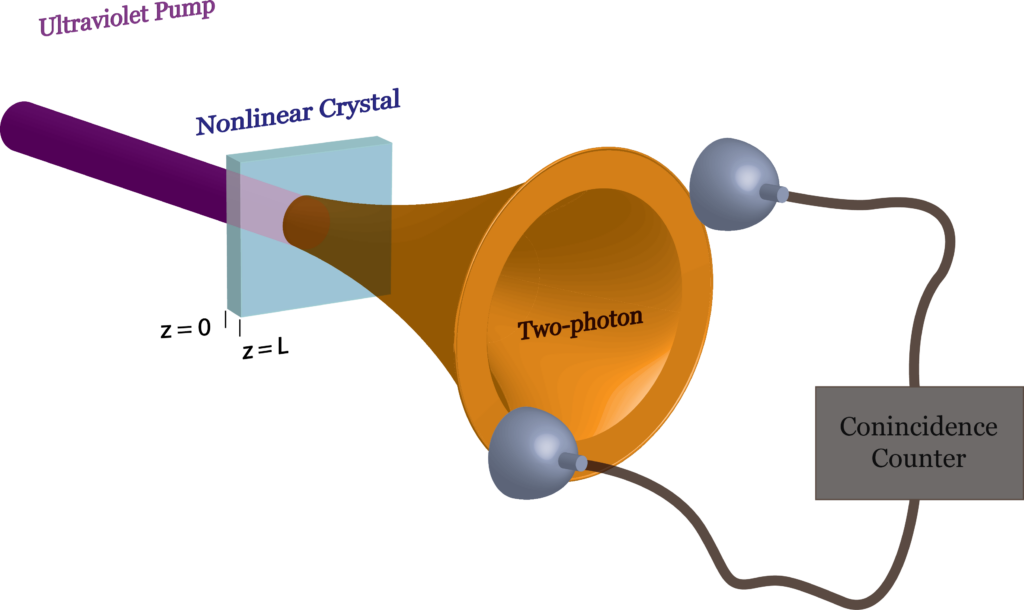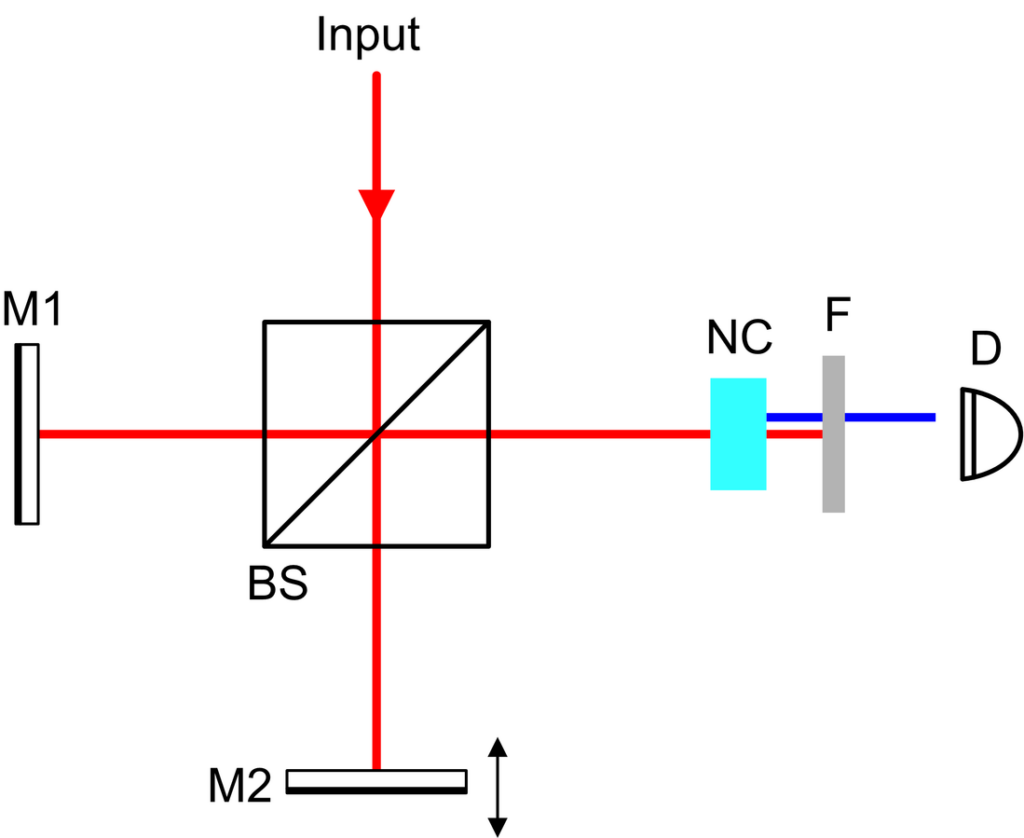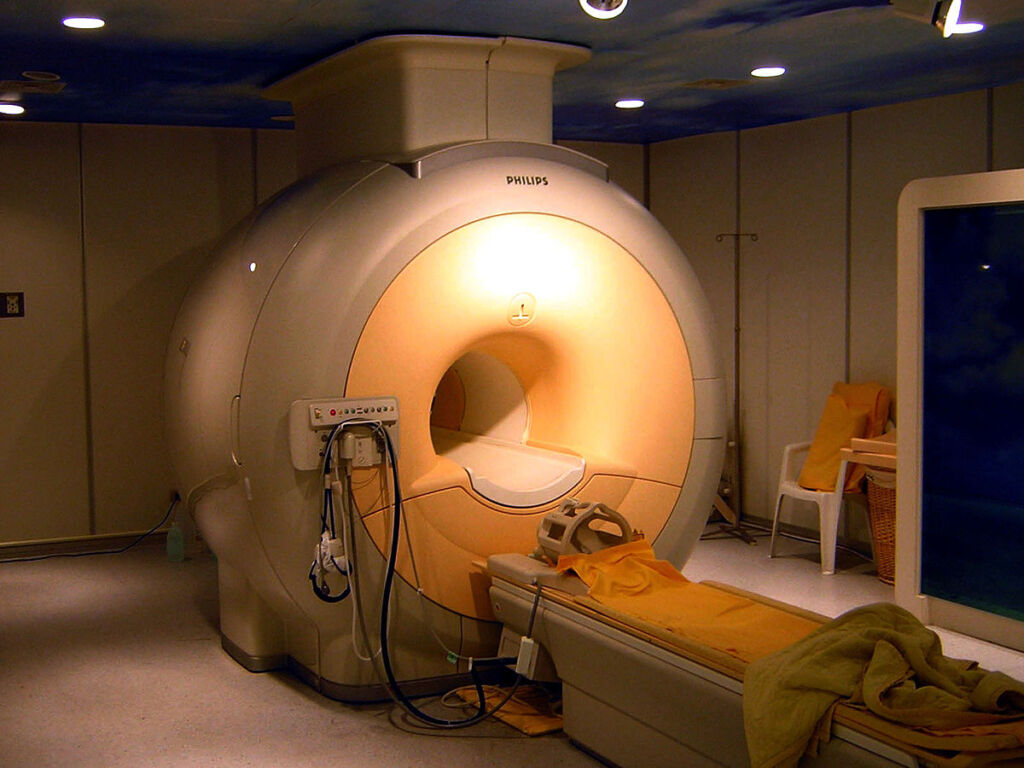Ever wondered how quantum entanglement for medical imaging might help in cancer diagnosis? In recent years, there has been increasing concern about the spread of cancer in aging Western societies. Various types of cancers including breast cancer, lung cancer, and prostate cancer have become more common and a major threat to Western societies. According to the World Health Organization (WHO), cancer is the second leading cause of death globally. In 2018, WHO reported that an estimated 9.6 million deaths were caused by cancer. The organization has also reported that the incidence rate has been increasing.
In 2021, the American Cancer Society estimated there will be 1.9 million new cancer cases and around 610 thousand deaths while in Europe, the European Cancer Information System reported an estimated 4.1 million new cancer cases and 1.9 million deaths in 2018.
Despite the growing numbers of cancer patients, the mortality rate has been decreasing thanks to the advancement and development of early diagnosis techniques and detection methods. Some of the most common cancer detection techniques are biopsies where a sample is taken out of the suspected area and inspected in laboratories, MRIs and CT scans that image the soft tissue of the body to find tumors, blood tests, and even genetic testing that provides the likelihood of certain cancers such as breast cancer.
However, clinical cancer diagnosis still faces many challenges, notably cost and turnaround time. Depending on their complexity, it can take days and even weeks for the results of a diagnosis to come back. The turnaround time depends on the medical professional performing the diagnosis and their expertise. The cost also varies with the type of detection technique as well as the type of cancer the patients may suffer from. Moreover, some techniques suffer from availability and accessibility issues as they are not available in every hospital and medical center and often require patients to travel long distances to receive the proper diagnosis they need.
One example of these methods is Mid Infrared Radiation or MIR. MIR is another imaging technique that has successfully demonstrated high reliability in cancer diagnosis. However, the turnaround time does not meet the standards of rapid diagnosis and the technology needed for the generation and detection of Mid-Infrared light is still underdeveloped and expensive.
More recently, Quantum Imaging with Undetected Photons, an application that takes advantage of the quantum entanglement phenomenon, has been identified as a method that could potentially outperform MIR spectroscopy in both time and sensitivity, possibly saving millions of lives through early diagnosis.
What is quantum entanglement? How is quantum entanglement for medical imaging done? And how can it help save cancer patients?
In this article, we will discuss the emergence of the new Quantum Enhanced Early Diagnostics (QEED) project funded by the German Federal Ministry of Education and Research that aims to develop an early diagnosis technique for cancer based on photon entanglement.
What is quantum entanglement?
Quantum entanglement is a phenomenon.
When objects shrink in size, classical physics fails to describe and explain their behavior. Instead, a more suitable and accurate approach of studying these objects is quantum mechanics. In this branch of physics, these objects, often referred to as particles due to their miniscule size, are characterized by quantum states. Atoms, electrons, and photons are all examples of particles that can be described by a quantum state. An example of that is for a particle to be in an entangled state.
Now, let us consider a pair of photons generated at the same time. When a measurement is performed on one photon of the pair, the state of the photon is collapsed into a new state that depends on the type of experiment carried out. What is fascinating about this experiment is that the other photon or particle’s state would also change to a state that can be determined based on the results of the experiment done on the first photon. This is known as entanglement and the photons are said to be entangled or in an entangled state.
Let us consider a more concrete experiment: the measurement of the spin of entangled atoms. If we measure the spin of one of the atoms to be spin up, then we know that the spin of the other atom would be down (or up depending on the experiment). In other words, you can think of quantum entanglement as a correlation between the states of a subsystem that is not in any way dependent on how far the particles are physically apart. This phenomenon is known as the nonlocality of quantum entanglement. Only a few months ago, physicists Alain Aspect, John Clauser, and Anton Zeilinger have been awarded the Nobel Prize in Physics for their work on developing experiments to reinforce the properties of quantum entanglement and demonstrate a new phenomenon, “quantum teleportation”.
You might also be interested to read this Guide on Quantum Coherence.
Generation of Entangled Photons
You may ask, how is it possible to generate photons that can secretly communicate with each other? In fact, there are several methods that have been researched and used over the years to achieve that, including quantum dots, Four-wave Mixing, and Entanglement Swapping where entanglement is produced after the generation of the 2 photons, unlike the first 2 methods. Perhaps one of the most popular techniques for generating entangled photons is Spontaneous Parametric Down Conversion or SPDC. This well-established technique generates entanglement during the creation of the photon pair. In this method, a weak pump laser of frequency OMEGA is used to illuminate a non-linear crystal that produces 2 photons of frequencies OMEGA 1 and OMEGA 2 satisfying the relation below.
ω=ω1+ω2
The generation of entangled photons is crucial to several applications including quantum computing, quantum cryptography, and most importantly, quantum imaging.

Illustration representing the process of spontaneous parametric down conversion SPDC for quantum entanglement generation. An ultraviolet pump penetrates a thin layer of a nonlinear crystal results in the generation of 2 entangled photons that can be detected using photodetectors. Courtesy of Wikipedia.
Imaging Using Undetected Photons?
Now that we have a better understanding of what quantum entanglement is and how it is possible to produce it, we will discuss in the section below how it can be beneficial for cancer diagnosis.
As we have previously discussed, entanglement typically involves 2 photons, referred to as a signal photon and an idler photon. The signal photon is used to make a measurement while the idler photon is often used as an indicator of the existence of the signal photon. It is said that the idler photon heralds the signal photon.
In quantum imaging with undetected photons experiments, 2 non-linear crystals are used to generate 2 photon pairs (idler and signal photons). The 2 crystals are placed each in an arm of a Michelson interferometer to create interference. This process is known as non-linear interference where the interference of light generated by non-linear processes (in this case SPDC) occurs. The sample is added to one of the arms of the interferometer. In this configuration, the idler photons emitted by one of the crystals will interact with the sample while the signal photons will continue to propagate. Then, the signal photons created by both crystals interact with each other, and an interference pattern forms. While the idler photons that illuminate the sample are not detected, the signal photons carry information about the object through entanglement. Recall from our discussion above that when the state of an entangled photon changes that information will be translated to the state of the second entangled photon. Finally, that information is recovered by a camera or a detector from the interference pattern. This technique is known as Quantum Imaging with Undetected Photon, a name that stems from the fact that idler photons illuminating the sample are never detected.

Example of a setup used in non-linear interferometry. M1 and M2 are mirrors, BS is a beam splitter, NC is the nonlinear crystal responsible for the 2-photon generation, F is a filter, and D is a detector. Courtesy of Wikipedia.
Advantages of Imaging Using Undetected Photons Imaging
Quantum Imaging with Undetected Photons or Quantum Enhanced Imaging boasts numerous advantages. As we have previously considered, this technique can be achieved with very simple setups and without the need for fancy electronics and detectors. In addition to the non-linear crystals, the setups are comprised of beam splitters, lenses, mirrors, and a camera. The compactness and simplicity of this technique makes it especially easy to integrate in the medical field at a very low cost.
Label detection methods require the addition of a chemical or a physical label, typically a fluorescent dye, to the sample in order to identify certain atoms and molecules and distinguish them from other bodies. However, these labels can be misleading and often result in false positives and false negatives. While imaging techniques such as CT scans and X-ray imaging put patients under radiation, this technique is non-invasive as it completely prevents the use of radiation and exposure to it.
Research has shown that Quantum Imaging with Undetected Photons can operate below the Shot noise limit and achieve high levels of resolution. This technique has the ability to detect the smallest changes in the molecular structure of the sample which could help cancer researchers understand the development of the disease and its progression. Thus, making more informed decisions about the patient and their treatment.
One of the key advantages of this technique is its short turnaround time. While other techniques can take up to weeks to produce results, researchers working on the Quantum Enhanced Early Diagnostics project predict that it will reduce the measurement time to just 2 minutes.
It is also worth noting that Quantum Imaging has a wide spectral range. In theory, imaging can be performed at any wavelength without the need for a detector or even a source operating at the same wavelength. This property is extremely important as the technology for certain wavelength ranges is still underdeveloped and very expensive.
Quantum Enhanced Early Diagnostics Project
The QEED project is a new project that will bring together research institutes, clinical institutes, and industrial partners that will combine their knowledge and expertise together to develop a novel technology based on quantum imaging for early cancer diagnosis. The main goal of this project is to reduce the detection time and design a method that can be easily implemented in the medical setting. And while the main focus will be on enhancing the clinical properties of the system, the project will also work on developing independent components that research institutions and industrial companies can benefit from alike.
Conclusion
Quantum imaging has the potential to revolutionize the medical imaging field. Current medical imaging and diagnosis techniques suffer from sensitivity and affordability issues. Some tests such as biopsies can cause complications for the patients and test results could take weeks to come back. Projects like the QEED project aim to mitigate these issues and create a technology that detects the disease in its early stages at a lower cost and a faster turnaround time. Medical imaging will not be the only field to benefit from this technology. Its impact can be especially useful in astronomy, physics, chemistry, and biology.
For further readings about quantum imaging, you can check the references below:
- Lemos, G., Borish, V., Cole, G. et al. Quantum imaging with undetected photons. Nature 512, 409–412 (2014). https://doi.org/10.1038/nature13586
- Paul Kaufmann, Helen M Chrzanowski, Aron Vanselow, and Sven Ramelow, “Mid-IR spectroscopy with NIR grating spectrometers,” Opt. Express 30, 5926-5936 (2022)
- Y. Zou, L. J. Wang, and L. Mandel, “Induced coherence and indistinguishability in optical interference,” Phys. Rev. Lett., vol. 67, no. 3, pp. 318– 321, Jul. 1991, doi: 10.1103/PhysRevLett.67.318
- Inna Kviatkovsky et al., Microscopy with undetected photons in the mid-infrared.Sci. Adv.6, eabd0264(2020).DOI:1126/sciadv.abd0264
If you would like to learn more about cancer treatment and research, please visit the links below:
- https://www.dak.de/dak/bundesthemen/angst-vor-krankheiten-2112772.html#/
- https://de.statista.com/statistik/daten/studie/240/umfrage/verteilung-der-sterbefaelle-nach-todesursachen/
- https://www.deutsche-apotheker-zeitung.de/news/artikel/2020/02/04/who-warnt-vor-verdoppelung-der-krebserkrankungen-bis-2040
This article is made possible with the support of art photonics GmbH, a world leader in the design and manufacture of fiber optic components and solution for medical and biotech applications

